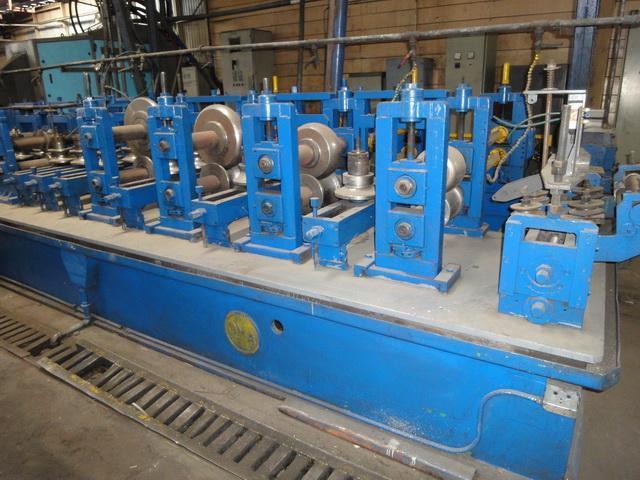
In the realm of industrial manufacturing, tube mills play a pivotal role in the production of various types of metal pipes and tubes. These mills are complex machines that utilize precise mechanisms to transform raw materials into high-quality, finished products. This
post aims to provide a comprehensive overview of what a tube mill does and how it functions.
A tube mill, also known as a pipe mill, is a machine used for the production of metal pipes and tubes. It operates by processing a flat strip or coil of metal into a cylindrical shape, which is then longitudinally welded to form a continuous tube. Tube mills are commonly used in industries such as construction, automotive, oil and gas, and furniture manufacturing.
Uncoiling and Straightening:
The manufacturing process begins with the uncoiling of a metal strip or coil, typically made of steel or stainless steel. The strip is passed through a series of rollers that flatten and straighten it, ensuring uniformity and removing any deformities or bends.
Forming:
After straightening, the flat strip enters the forming section of the tube mill. Here, a set of rolls gradually bends the strip into a tubular shape. The rolls are strategically designed to progressively shape the strip while maintaining the desired dimensions and tolerances.
Welding:
Once the tube shape is formed, the edges of the strip are heated using high-frequency induction or electric resistance to create a plasticized state. The heated edges are then pressed together under pressure to forge a continuous weld. Various welding techniques, such as high-frequency welding (HFW) or electric resistance welding (ERW), are employed based on the specific requirements of the tube.
Sizing and Shaping:
Following the welding process, the tube passes through a series of sizing and shaping rolls. These rolls ensure that the welded seam is smoothed out and the tube attains its precise dimensions. Additionally, the rolls may also incorporate specialized profiles to produce tubes with specific cross-sectional shapes, such as square, rectangular, or oval.
Cutting and Finishing:
Once the tube reaches the desired length, it is cut to size using a flying saw or another cutting mechanism. The cut ends are then deburred to remove any sharp edges or burrs, resulting in a smooth and finished tube. Further finishing processes, such as end-facing, chamfering, or surface treatment, may be employed to meet specific product requirements.
Quality Control and Inspection:
Throughout the tube mill process, various quality control measures are implemented to ensure the integrity and consistency of the manufactured tubes. Non-destructive testing techniques, such as ultrasonic or eddy current testing, may be used to detect defects, cracks, or inconsistencies. Additionally, dimensional measurements, surface inspections, and material analysis are conducted to adhere to stringent quality standards.
Tube mills are vital machines in the production of metal pipes and tubes. By employing a series of precise steps, including uncoiling, straightening, forming, welding, sizing, and finishing, these mills transform raw materials into high-quality, ready-to-use tubes. Understanding the functioning of a tube mill provides valuable insights into the manufacturing processes behind the essential products used in various industries. Click here to view our listed Tube Mills for sale.
Galaxie Corporation specializes in buying and selling used machinery. Take a look at our current selection of machinery!
Go backBe the first to see our new arrivals, plant liquidations, promotions and news.